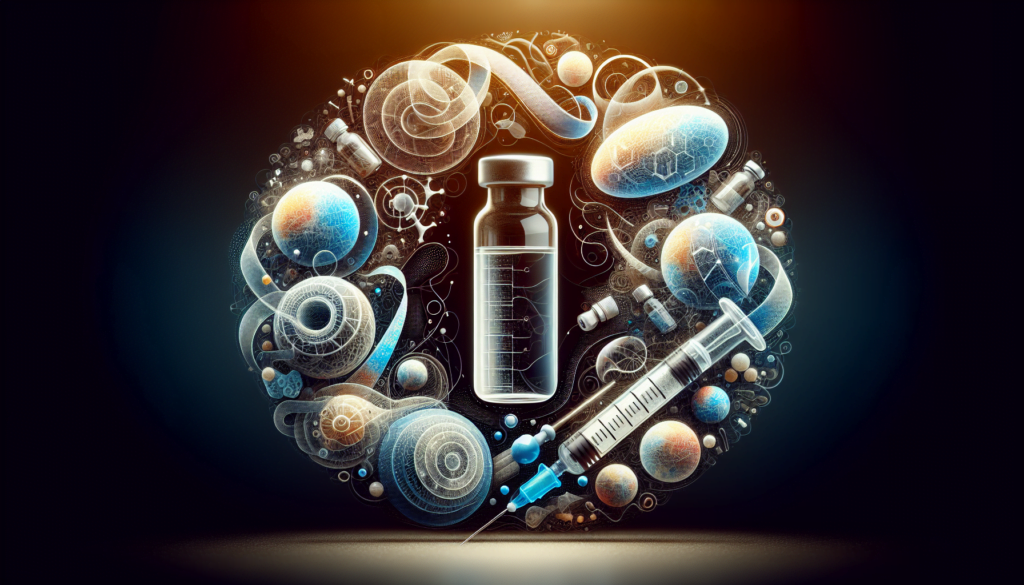Imagine this scenario: You and your friends are having lunch at a cozy café when the topic of health comes up. Suddenly, you hear the terms “insulin resistance” and “diabetes” being thrown around, but you’re not quite sure what they mean. Don’t fret! In this article, we will unravel the mystery behind these two conditions and shed light on the key differences between insulin resistance and diabetes. So, grab a cup of coffee and get ready to empower yourself with knowledge about your body!

Insulin Resistance
1.1 Definition
Insulin resistance is a condition in which the body’s cells become less responsive to the effects of insulin, a hormone produced by the pancreas. Insulin plays a vital role in regulating blood sugar levels by allowing glucose to enter the cells and be used for energy. However, when the cells become resistant to insulin, the glucose remains in the bloodstream, leading to elevated blood sugar levels.
1.2 Causes
Various factors can contribute to the development of insulin resistance. Sedentary lifestyle, obesity, and a diet high in refined sugars and carbohydrates are some of the common causes. Genetic predisposition, hormonal imbalances, and certain medical conditions such as polycystic ovary syndrome (PCOS) and Cushing’s syndrome can also increase the risk of insulin resistance.
1.3 Symptoms
In the early stages, insulin resistance often causes no noticeable symptoms. However, as the condition progresses, individuals may experience symptoms such as fatigue, increased hunger, frequent urination, and excessive thirst. These symptoms may overlap with those of diabetes, making it important to seek medical evaluation for a proper diagnosis.
1.4 Diagnosis
Diagnosing insulin resistance typically involves a series of tests to assess blood sugar levels and insulin sensitivity. A common test is the oral glucose tolerance test (OGTT), in which blood samples are taken before and after consuming a sugary drink. Additionally, fasting blood glucose levels, insulin levels, and HbA1c levels (which reflect average blood sugar levels over the past two to three months) may be measured to evaluate insulin resistance.
1.5 Treatment
The primary goal of treating insulin resistance is to improve insulin sensitivity and regulate blood sugar levels. Lifestyle modifications play a crucial role in managing this condition. Regular exercise, adopting a balanced diet that includes whole grains, lean proteins, and healthy fats while limiting processed foods and sugary beverages can significantly improve insulin sensitivity. Weight loss, if necessary, can also be beneficial in reducing insulin resistance. In some cases, medications such as metformin may be prescribed to help control blood sugar levels and enhance insulin responsiveness.

Diabetes
2.1 Definition
Diabetes is a chronic condition characterized by elevated blood sugar levels due to the body’s inability to produce or properly respond to insulin. It is a metabolic disorder that can have serious implications if not properly managed.
2.2 Types of Diabetes
There are several types of diabetes, including Type 1 diabetes, Type 2 diabetes, and Gestational diabetes.
2.2.1 Type 1 Diabetes
Type 1 diabetes, also known as juvenile diabetes, is an autoimmune condition in which the immune system mistakenly attacks and destroys the insulin-producing cells in the pancreas. As a result, the body is unable to produce sufficient insulin to regulate blood sugar levels. People with Type 1 diabetes require lifelong insulin injections or the use of an insulin pump to manage their blood sugar levels.
2.2.2 Type 2 Diabetes
Type 2 diabetes is the most common form of diabetes, accounting for approximately 90% to 95% of all cases. This type occurs when the body becomes resistant to the effects of insulin and is unable to produce enough insulin to compensate for the resistance. Lifestyle factors such as poor diet, sedentary lifestyle, and obesity are major contributors to the development of Type 2 diabetes. It can often be managed through lifestyle modifications, including diet, exercise, and oral medications. In some cases, insulin injections may be necessary.
2.2.3 Gestational Diabetes
Gestational diabetes occurs during pregnancy and affects approximately 2% to 10% of pregnant women. It is characterized by high blood sugar levels that develop during pregnancy and usually resolves after delivery. However, women who have had gestational diabetes have an increased risk of developing Type 2 diabetes later in life.
2.3 Causes
The causes of diabetes vary depending on the type. Type 1 diabetes is believed to be caused by a combination of genetic and environmental factors, while Type 2 diabetes is primarily influenced by lifestyle factors such as poor diet, sedentary behavior, and obesity. Gestational diabetes is thought to be a result of hormonal changes during pregnancy.
2.4 Symptoms
Common symptoms of diabetes include frequent urination, excessive thirst, unexplained weight loss, increased hunger, fatigue, slow-healing wounds, blurred vision, and recurrent infections. However, some individuals may experience no symptoms or have mild symptoms that go unnoticed.
2.5 Diagnosis
Diagnosing diabetes involves blood tests to measure fasting blood glucose levels, oral glucose tolerance test (OGTT), and HbA1c levels. These tests help determine the presence and severity of high blood sugar levels, helping healthcare professionals make an accurate diagnosis.
2.6 Treatment
Diabetes management involves a multi-faceted approach that includes lifestyle modifications, medication, and regular monitoring. For Type 1 diabetes, insulin injections or the use of an insulin pump is essential to regulate blood sugar levels. Type 2 diabetes can often be managed through lifestyle changes such as adopting a healthy diet, regular exercise, weight loss, and oral medications. In some cases, insulin therapy may be necessary. Gestational diabetes is typically managed through a combination of dietary changes, regular physical activity, and monitoring blood sugar levels. In some cases, insulin injections may be required.
In conclusion, insulin resistance and diabetes are closely related conditions that can have a significant impact on an individual’s health. Understanding the definitions, causes, symptoms, diagnosis, and treatment options for these conditions is crucial in managing and preventing their adverse effects. It is important to seek medical advice if you experience any symptoms or have risk factors associated with insulin resistance or diabetes. With proper care, lifestyle modifications, and early intervention, individuals can maintain optimal blood sugar levels and lead a healthy, fulfilling life.


